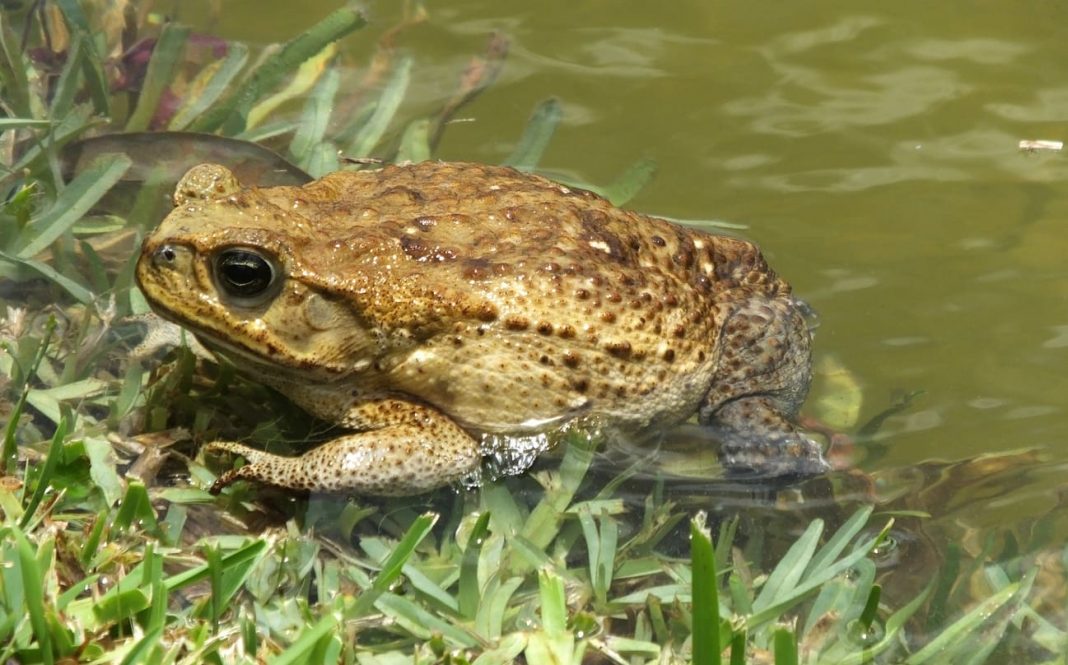Texas is one of the most biodiverse states in the U.S.A. because of its large size and its 10 unique ecoregions. Each ecoregion has its own distinctive climate and habitats that support a variety of species across the state. One class of animals Texas excels at in biodiversity is amphibians, those who live in water and on land. The most common modern amphibians that you might see exploring outdoors in your backyard are toads or frogs native to Texas. But what’s the difference?
Frogs versus toads
The truth is that the two amphibians have more similarities than differences. For instance, all frogs and toads are vertebrates with no tails contrary to salamanders. And they have larger and stronger hind legs that they use for capturing insects as food or escaping predators. The size of frogs and toads and their diets vary between species. Another trait of theirs is their moist skin that’s used to breathe compared to a reptile’s dry and scaly skin.
Lastly, frogs and toads both start out as larva-like eggs laid in eggs that hatch into tadpoles. After hatching, the tadpoles go through a metamorphosis where they begin to breathe air and grow legs. The life of frogs and toads going from water creatures to land creatures make them true amphibians!
What distinguishes a frog and a toad is their external appearance. A toad’s skin is dryer and more textured than a frog’s, an exception for amphibians. A frog’s skin is smooth, moist, and doesn’t have any warts. Toads also tend to have smaller legs made for hopping than frog legs made for long leaps.
Frogs and toads in Texas
Texas is home to over 40 native species of frogs or toads that inhabit all 10 of its ecoregions. Most native species are mainly found in Texas but some live in bordering states and Mexico. You may have seen some of these species in your area or visited some in a local zoo. No matter where in Texas you live, here are some frogs native to Texas to look out for:
- Hurter’s spadefoot toad
- East Texas toad
- Houston toad
- Rio Grande chirping frog
- Gulf Coast toad
- Rio Grande leopard frog
- Texas toad
- Balcones barking frog
- Cliff chirping frog
- Eastern green toad
1. Hurter’s spadefoot toad
First is the Hurter’s spadefoot toad (Scaphiopus hurterii) which mainly resides in east Texas and Oklahoma. Its colors can vary from grey-green to greenish-brown but its skin is relatively smooth for a toad. Similar species of toads have small, dark, round growths on the bottom of their hind feet which earned them the name of a “spadefoot” toad. They prefer to live in forests, shrublands, or inland wetlands that contain sandy soil. When it is not their breeding season in the summer months, they burrow themselves under logs or in soil for shelter.
2. East Texas toad
The east Texas toad (Anaxyrus woodhousii velatus) was discovered in 1951 and occupies the eastern Piney Woods ecoregion. There are a few ways this species is recognized within the animal kingdom. Some consider them a subspecies of either Woodhouse’s toads, Fowler’s toads, or a combination of the two. Their color is yellowish-brown or olive with darker warts similar to Woodhouse’s toads. But they are sized around 2-3 inches in length which is more similar to Fowler’s toads.
3. Houston toad
Houston toads (Anaxyrus houstonensis) have speckled brown patterns sometimes with purple or greenish-brown warts. Females are approximately 10% larger than males and males have darker colored throats than females. The majority of adult Houston toads live in the Bastrop State Park in Bastrop, Texas. If you haven’t heard or seen the Houston toad there’s a good reason: they have been federally listed as an endangered species since 1970. Thankfully, the Houston Zoo has been working to breed, release, and care for Houston toads since the 1960s. There is also a Houston toad in their Reptile and Amphibian Building for Zoo visitors along with other frogs native to Texas.
4. Rio Grande chirping frog
The Rio Grande chirping frog (Eleutherodactylus cystignathoides) is recognizable for its small size (less than 1 inch long!) and for running away from predators instead of hopping or leaping. They are recorded living along the Gulf Coast in south Texas and Mexico. They can be found in areas with moist vegetation and lawns and live nocturnally. Unlike most frogs native to Texas, both males and females have calls they make during the rainy season. Their call is high-pitched and similar to chirping insects. Take a listen to their call in this video:
5. Gulf Coast toad
The Gulf Coast toad (Incilius nebulifer) is a very prominent and adaptable species that can be found around the state from the coastal to the central regions of Texas. In fact, on iNaturalist.org it is the most observed toad or frog in Texas. Their adaptability means they can survive in environments from urban cities to forests to wetlands of Texas and Mexico. They have a very distinctive appearance for their contrasting light stripe down their back and two contrasting lateral stripes on each side that meet their eyes.
6. Rio Grande leopard frog
The Rio Grande leopard frog (Rana berlandieri) is an aquatic frog that lives in permanent bodies of water throughout the south, central, and west Texas. They breed throughout the year and lay clutches of hundreds of eggs in large bodies of water. Their appearance is similar to other species of leopard frogs who have a combination of light green, tan, and brown spots on their back and long legs. They are also distinct for their slimmer waists and more angular noses.
7. Texas toad
It’s none other than the Texas toad (Anaxyrus speciosus) that is the official state amphibian of Texas. They occupy the western two-thirds of the state but also live in western Oklahoma and northern Mexico. They survive best in humid grasslands and savannahs and breed in temporary wetlands and ponds during summer. Texas toads have a unique way of defending themselves against predators: their textured skin emits a toxic substance when it cannot escape or burrow somewhere nearby. Texas toads usually have tan or brown spots and younger ones have distinct red-tipped warts.
8. Balcones barking frog
The Balcones barking frog (Craugastor augusti latrans), aka the eastern barking frog, is a subspecies of the common barking frog (C. augusti). While barking frogs are more commonly found in Mexico, the Balcones barking frog is found in central and west Texas. Their appearance more closely resembles a toad with a broad head and shorter hind legs. From a distance, a male Balcones barking frog can sound like a dog but up close their mating call sounds more like a guttural, low humming noise. Take a listen to the barking frog found in Arizona:
9. Cliff chirping frog
Cliff chirping frogs (Eleutherodactylus marnockii ) are found in central and west Texas where they live in humid, rocky habitats. Although they are prevalent in urban areas, they are known for burrowing themselves in limestone caves and ravines. They look very similar to spotted chirping frogs (E. guttilatus) that live in the Big Bend region. They are around an inch long, have flat heads, but have more distance between the eyes than spotted chirping frogs. Unlike most of the frogs native to Texas on this list, cliff chirping frogs breed on land in places with moist soil after rainfall.
10. Eastern green toad
Lastly, the eastern green toad (Anaxyrus debilis debilis) is a subspecies of the green toad (A. debilis). This toad’s coloring lives up to its name ranging from pale to dark green with black spotting or warts. Like Texas toads, males will have darker throats while females have yellow or pale throats and are larger. They are found in semi-arid grassy prairies and savannahs. Even though they are a prevalent species in the western two-thirds of Texas, they can only be seen immediately after rainfall.
Like this content and want more? Read more about pets and wildlife content here. And don’t forget to subscribe to Dock Line Magazine for more content like this sent straight to your email!















